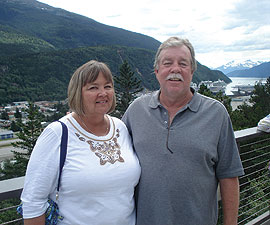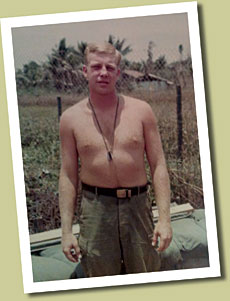 |
||||||||||||
|
March/April 2015 Letters
In regard to Mike Dedrick’s letter in the November/December issue questioning the communist killing of 2,800 civilians (and thousands more missing and never found) in Hue during the Tet Offensive, accounts written in recent decades by North Vietnamese officials (e.g., Col. Le Minh, NVA commander at Hue during the ’68 offensive; former Hue DRV official Hoang Phu Ngoc Tuong; and former NVA Col. Bui Tin; and official DRV histories of the war (e.g., The Tri-Thien-Hue Battlefield During the Victorious Resistance War Against the Americans to Save the Nation) confirm the Hue executions, albeit sometimes in language chosen to excuse them. These accounts also leave no doubt that NVA units were responsible for most of the executions and disappearances in Hue, even if sometimes assisted by the local sympathizers. In fact, the execution by communist forces of civilians associated with the government in Saigon was standard procedure in captured hamlets and villages during the Vietnam War. They acted in similar ways during their earlier war with the French. Only the high number of those murdered at Hue separates those killings from other now largely forgotten civilian killings. While it may have been possible at one time for reasonable people to believe that the National Liberation Front and the VC were allied to but independent from the government in Hanoi, it is now clear from primary sources that all communist civilian and military entities in the South were thoroughly integrated into North Vietnam’s governmental and military command structure, and all were under the direct control of the government in Hanoi. Finally, while no one can reasonably argue that the American way of war is not hugely destructive, or that there were no civilian casualties in Hue apart from the communist killings, American airpower and heavy artillery played little role in the fighting. They cannot, therefore, have been responsible for the killings, as Dedrick claims. In fact, as with all of the other 1968 Tet battles, the fighting in Hue was largely carried out by lightly armed ARVN forces, who also took most of the allied casualties. Even where U.S. Marines held sway, bad weather made close air support difficult or impossible, and they were largely engaged in close-quarter, small-unit city fighting that denied them the use of massive American firepower. Their success relied on dogged and determined Marine grunts armed with light, medium, and only minimal heavy weapons to defeat the NVA. David Sciacchitano I enjoyed John Prados’s “SEALORDS: Brown Water Breakthrough.” His articles are very informative and thought provoking. Two items in the SEALORDS article really stuck out. First, ARVN treachery with the ARVN crew tossing mortar rounds into the drink and showing up with fishnets. During a Northern Virginia Chapter 227 meeting in 2006 I caught Lewis Sorely’s book tour promoting his vindication of ARVN. To a man, no one at the meeting had anything good to say about the ARVN—either as an ally or as a fighting force. The second item goes to remembrance and mis-remembrance in the John Kerry medal “scandal” during the 2004 presidential election campaign. The “swift boating” of Kerry by John O’Neill and Swift Boat Veterans for Truth, including the former COMNAVFORM intelligence chief Earl Rectanus, are legendary—not because the charges that they made were true, but because the presentation by the SBVT was made to fit the neo-con view of the Vietnam War. It didn’t matter that all of the accusations against Kerry were de-bunked in detail later. The damage was done. Karl Rove’s maxim of going after an opponent’s strengths (Kerry served in Vietnam; George W. Bush did not) won out. Reporting for Duty, yeah right. Mission accomplished. Mark Evitts During initial discussions with Mr. Prados, we agreed that the controversies around the service of John Kerry and Bob Kerrey need to be mentioned but shouldn’t overshadow a piece on SEALORDS history. —Editor
|
||||||||||||
|
|
||||||||||||
|
||||||||||||
8719 Colesville Road, Suite 100, Silver Spring. MD 20910 | www.vva.org | contact us |
||||||||||||












 Then I applied for disability. I met a wonderful readjustment counselor at the Vet Center who helped me with the process. I had to jump through a lot of hoops and re-visit some things that were painful. But I “strapped it on” and got disability for PTSD. They turned down my hearing disability claim but gave me a $5,000 pair of hearing aids. Too bad all this stuff wasn’t retroactive.
Then I applied for disability. I met a wonderful readjustment counselor at the Vet Center who helped me with the process. I had to jump through a lot of hoops and re-visit some things that were painful. But I “strapped it on” and got disability for PTSD. They turned down my hearing disability claim but gave me a $5,000 pair of hearing aids. Too bad all this stuff wasn’t retroactive. When I look back over the years, I recognize many instances when PTSD affected my life. When I first got back to The World, I went to a party. Someone dropped a quart of beer that smashed on the tile floor. I dove behind the couch. Kind of embarrassing.
When I look back over the years, I recognize many instances when PTSD affected my life. When I first got back to The World, I went to a party. Someone dropped a quart of beer that smashed on the tile floor. I dove behind the couch. Kind of embarrassing.